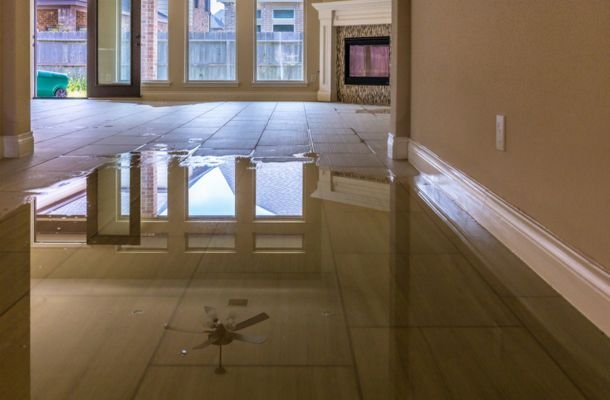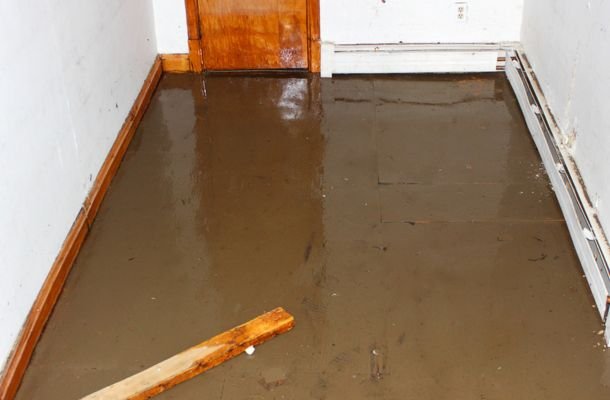Basement flooding is a common and costly problem for homeowners, often leading to significant water damage, mold growth, and structural issues. Whether caused by heavy rainfall, melting snow, or plumbing failures, flooding can quickly turn your basement into a disaster zone. Fortunately, there are several effective strategies and preventative measures you can take to protect your basement from flooding. This guide provides expert advice on how to prevent basement flooding, covering everything from drainage systems and waterproofing solutions to regular maintenance tips.

Understanding the Causes of Basement Flooding
Common Causes of Basement Flooding
- Heavy Rainfall and Storms: Excessive rain can overwhelm drainage systems, leading to water seeping into basements.
- Melting Snow: Rapid snowmelt can saturate the ground around your home, causing water to leak through foundation cracks.
- Poor Drainage: Improperly graded yards, clogged gutters, and downspouts that don’t extend far enough from the house can all contribute to water pooling around the foundation.
- Sump Pump Failure: A malfunctioning sump pump or a power outage during a storm can leave your basement vulnerable to flooding.
- Sewer Backups: Blocked or overwhelmed sewer lines can cause wastewater to back up into your basement.
- Foundation Cracks: Cracks in the foundation walls or floor provide easy entry points for water.
Identifying Vulnerable Areas
It’s important to identify and assess vulnerable areas in your basement that could lead to flooding. Check for:
- Foundation cracks: Examine walls and floors for visible cracks or signs of water infiltration.
- Window wells: Ensure window wells are properly covered and drained.
- Basement doors: Inspect basement entryways for gaps or poor sealing.
Effective Basement Flooding Prevention Strategies
1. Improve Exterior Drainage
Proper Grading
Ensure that the ground around your home slopes away from the foundation. This prevents water from pooling near the house and seeping into the basement.
- Tip: Aim for at least a 6-inch drop in slope within the first 10 feet from the foundation.
Maintain Gutters and Downspouts
Regularly clean and maintain your gutters and downspouts to ensure they direct water away from your home effectively.
- Extend Downspouts: Downspouts should extend at least 6 feet away from the foundation to prevent water from collecting near the basement walls.
2. Install a Sump Pump
Choosing the Right Sump Pump
A sump pump is a critical tool in basement flood prevention, designed to pump out water that collects in the sump basin and direct it away from your home.
- Primary Sump Pump: Essential for everyday water removal.
- Battery Backup Sump Pump: Provides protection during power outages when the primary pump might fail.
- Water-Powered Sump Pump: An alternative that uses municipal water pressure as a backup, ideal for areas without reliable electricity.
Regular Maintenance
Routine maintenance ensures your sump pump is ready when needed:
- Test the pump regularly: Pour water into the sump basin to trigger the pump and check for proper operation.
- Inspect the discharge line: Ensure the line is clear of obstructions and extends away from the foundation.
3. Waterproof Your Basement
Interior Waterproofing Solutions
Interior waterproofing focuses on preventing water that enters the basement from causing damage.
- Seal Cracks: Use epoxy or polyurethane injections to seal foundation cracks.
- Install a French Drain: A French drain inside the basement can help direct water to the sump pump.
Exterior Waterproofing Solutions
Exterior waterproofing is more comprehensive but often more costly, providing a first line of defense against water infiltration.
- Foundation Coating: Apply a waterproof coating or membrane to the exterior foundation walls.
- Exterior Drain Tile System: Install a drain tile system around the perimeter of your home to redirect groundwater away from the foundation.
4. Install Window Well Covers
Benefits of Window Well Covers
Basement windows and window wells are common entry points for water. Properly fitted window well covers can keep rainwater, snow, and debris from entering the window wells and leaking into the basement.
- Acrylic Covers: Durable and clear, allowing light to enter while keeping water out.
- Metal Grates: Offer protection from debris while maintaining ventilation.
5. Backflow Prevention for Sewer Lines
Install a Backwater Valve
A backwater valve prevents sewage from backing up into your basement during heavy rains or sewer line clogs. This device is installed on your main sewer line and allows wastewater to exit your home but prevents it from flowing back in.
- Tip: Regularly inspect and maintain the valve to ensure it functions correctly.
6. Regular Maintenance and Inspections
Routine Inspections
Regularly inspecting your home and its drainage systems can help identify potential issues before they lead to flooding.
- Inspect Gutters and Downspouts: Check for clogs and ensure they are securely attached.
- Check Sump Pump: Test your sump pump monthly, especially before the rainy season.
- Examine Foundation and Basement Walls: Look for new cracks or signs of moisture.
Seasonal Maintenance
Seasonal changes can impact the risk of basement flooding, making it important to adjust your maintenance routine accordingly.
- Fall: Clear leaves from gutters and downspouts to prevent clogs.
- Spring: Check that snowmelt is draining away from the house, and inspect your sump pump after winter.
7. Improve Landscaping
Strategic Landscaping
Proper landscaping can play a significant role in directing water away from your home.
- Swales: Create shallow ditches or swales in your yard to channel water away from your foundation.
- Rain Gardens: Install rain gardens with water-tolerant plants to absorb excess rainwater.
- Avoid Water-Thirsty Plants Near Foundation: Plants with deep roots or those requiring frequent watering can contribute to basement moisture problems.
Use Permeable Materials
Consider using permeable materials for driveways, walkways, and patios to allow water to soak into the ground rather than running off toward your foundation.

Additional Tips for Basement Flood Prevention
Install Flood Sensors
Flood sensors are inexpensive devices that alert you to the presence of water in your basement. They can be placed near sump pumps, water heaters, or any area prone to leaks.
- Smart Sensors: Smart sensors connect to your home’s Wi-Fi and send alerts to your smartphone if water is detected.
Elevate Appliances and Electrical Systems
To minimize damage in the event of a flood, elevate appliances such as washers, dryers, and water heaters above the basement floor level.
- Electrical Outlets: Consider raising electrical outlets and wiring above the potential flood level.
Insulate Pipes
Burst pipes due to freezing can lead to basement flooding. Insulate exposed pipes in your basement, especially those near exterior walls, to prevent freezing during cold weather.
Conclusion
Preventing basement flooding requires a proactive approach that combines effective drainage, proper maintenance, and strategic waterproofing measures. By understanding the common causes of flooding and implementing these expert-recommended strategies, you can protect your basement and home from costly water damage. Regular inspections, proper installation of sump pumps, waterproofing solutions, and drainage improvements are all crucial steps in keeping your basement dry and your home safe. Whether you’re dealing with heavy rainfall, melting snow, or plumbing failures, these preventative measures will help you stay ahead of potential flooding issues, providing peace of mind and long-term protection for your home.

